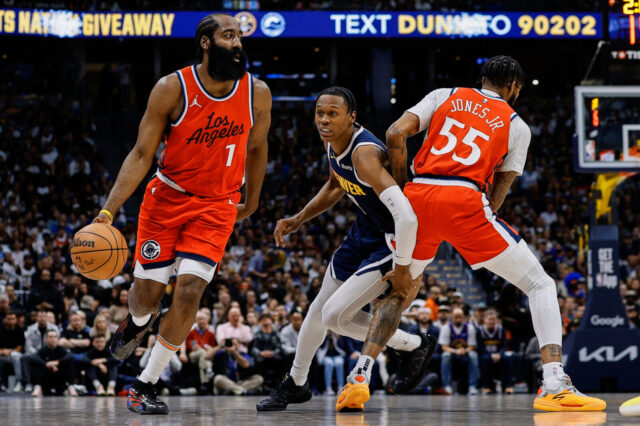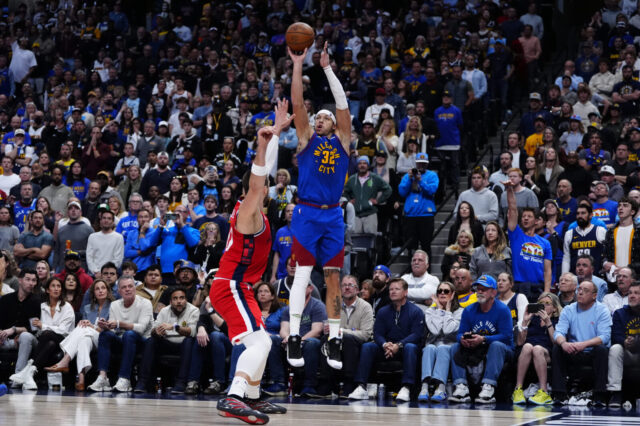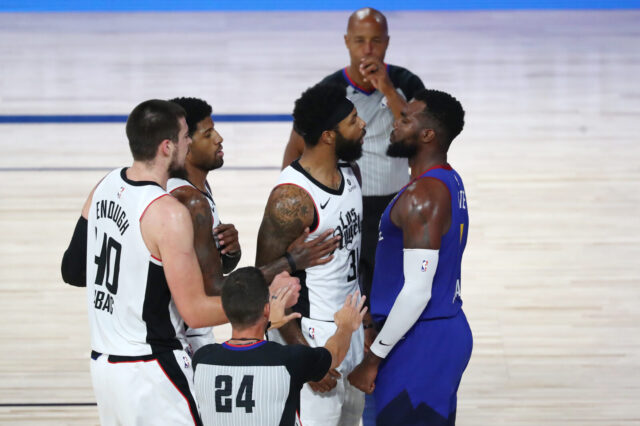I can’t say where or what Sean Kilpatrick was doing when he got the call. What I can say is that I’m fairly confident he was elated when he got it. That call had Nuggets General Manager Tim Connelly on the other end telling Kilpatrick the Nuggets were offering him a contract to play with the team. There was of course one catch: the contract is only good for ten days (or 3 games…but we’ll get into that in a bit). For most people who are already gainfully employed, someone offering a 10 day job would be comical at best, but for the fringe NBA player in the D-League it’s everything. On its most basic end, the 10 day contract is a guarantee to double the player’s earnings that season, and on the most fanciful end it’s the beginning of the realization of a life long dream.
The Rules
That dream is quickly tempered by the reality of the 10-day contract, which is almost exactly what it sounds like. In the event that a team should not play three or more games in the period of 10 days after a player signs the contract then his deal extends until immediately after the third game is played. So essentially in less than two weeks a guy has to be able to prove he deserves another contract. Luckily, a player can be signed to two 10-day contracts in a season and that second 10 day is pretty common, especially in a player like Kilpatrick's situation where the team who signs him has at least one player who is out for the season.
The reason is teams cannot sign more players to these short term contracts than they have players on the inactive list. With Wilson Chandler inactive for the rest of the season, the Nuggets are free to have one player signed to a 10-day contract at any point until the playoffs begin. After the second 10-day is signed a team has to either sign the player for the remainder of the season or release him. While the goal is obviously to secure a deal for the remainder of the season and catapult from there to carving out an NBA career, even just one 10-day contract is very lucrative for the player in perspective. If you want to get down into the nitty gritty details of these contracts, head on over to Larry Coon's CBA FAQ.
The Dream
The reason that even one 10-day contract is lucrative is because NBA D-League salaries are garbage. The highest paid players in the D- League will earn a base salary of $25,000 a season which equates to about the same as being a full time sales associate at Home Depot. Now, there are some other perks and bonuses available that might get that salary up to the $40,000 range but that's about the absolute max one can earn. For his 10 days of service in the NBA, Kilpatrick will earn $49,709.
Even one contract can make a paramount of difference financially. More important than the money though is the dream of making it in the NBA. Many players in the D-league could earn far more playing overseas with contracts that for some find their way into the seven figure range, but they are unlikely to be able to secure an opt-out clause to leave those teams mid-season to return to the NBA should an opportunity arise. Additionally, sometimes simple logistics dictate an NBA team sign a guy from the D-league to a 10-day contract, as Kilpatrick himself benefited from last season. While players like Emmanuel Mudiay and Brandon Jennings have elected to go overseas in lieu of college or the D-league prior to being drafted in the NBA, those like Kilpatrick who find themselves on the fringes of the NBA to begin with virtually never make it back if they choose to play in Asia or Europe (Hassan Whiteside is the interesting anomaly to this).
Thus the dilemma virtually every D-league player faces: take the overseas payday knowing its very unlikely you'll ever realize your dream of playing in the NBA or roll the dice in the D-League hoping to first get that 10-day deal and then be able to make a career in the Association. For an excellent read on the day to day life of a 10-day player, check out this piece by Sports Illustrated.
The Reality
The number of guys who make it into the NBA on a 10-day contract and stay there for good are incredibly few, though there are some. Notable players who made a living in the NBA after starting their careers on a week and a half deal are Kurt Rambis, Bruce Bowen, Raja Bell and Avery Johnson but you can pretty much count the number of guys who broke into the league on a 10-day on two hands. An NBA veteran who has proven to be a valuable player in the past and is trying to stay in the league, such as Chris Andersen when he signed with the Miami Heat or Gerald Green with the Phoenix Suns, is far more likely to hang on than a player like Kilpatrick. While he may earn a second 10-day deal or even a contract for the remainder of the season, the chances of him getting a deal next season are incredibly slim.
From 2010 to 2014, roughly 8% of the players who received 10-day contracts ended up getting a deal the next season and virtually all of them were non-guaranteed minimum salary deals. The percentage of guys who parlayed their 10-day deal into two seasons of NBA play afterwards is about 1% and again most of those guys are like Andersen and Green, players who had already made an NBA roster for multiple seasons in the past and for one reason or another fell out of the league.
The inherent difficulty of the deal is trying to prove to an employer in a little over a week that you deserve around a half million dollars. Players on these deals have to find that balance of doing enough to catch the right person's eye while at the same time not doing too much to get in the way of the team's day to day operation. While the odds are slim, Kilpatrick and others like him have nothing to hang their heads about. Sean has already had a few brief stints in the NBA but many others will make their first NBA appearance at some point this season via a 10-day contract.
At the very least the player earns enough through his D-league and 10-day deals to make a far better yearly salary than the majority of Americans and at the most, regardless of what happens after 10 days, he'll always have that uniform, a symbol of the fact that he made it to the highest level of professional basketball and no one can take that away.


